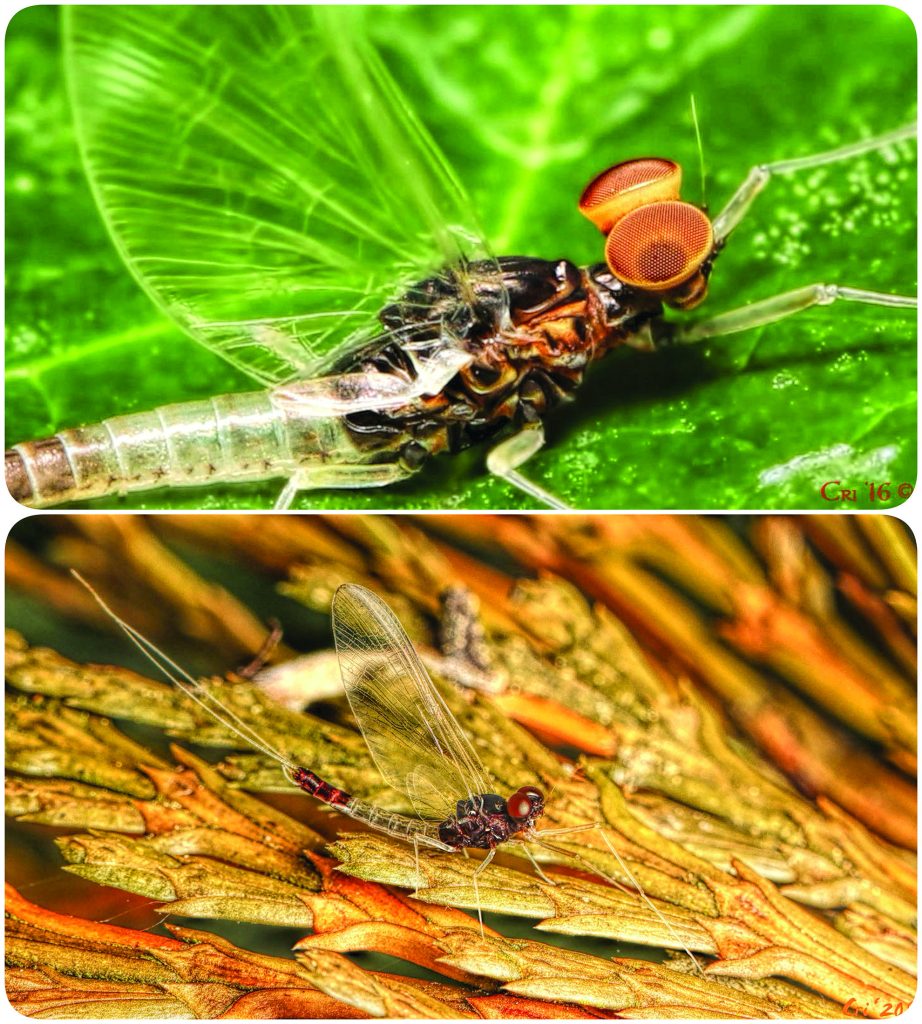
Diphetor hageni MAYFLY
This week’s crawly is a little mayfly with big eyes and a bunch of common names. Meet the Diphetor hageni mayfly AKA Hagen’s small minnow mayfly, iron blue quill, light blue dun or dark blue-winged olive. Whew! That’s a lot of nicknames for one teeny fellow.
I say “fellow” because all the monikers spring from the looks of the male hageni (pictured). Females are a warm reddish-brown color with pale yellow legs and small eyes.
Before we go any further, let’s pick a nickname and stick to it. I like “light blue dun” because the definition of dun is “of a dull grayish-brown color” so “light blue dun” makes no sense and I’m here for that.
Back to names; let’s also look at the “mayfly” moniker. When it comes to the light blue dun, that doesn’t fit either because these beauties are on the wing from June through October in our area. They hatch out as early as April in some states.
About those big eyes – blue dun males actually have two sets of eyes, giving them yet another nickname: “Mushroom-headed” mayflies. It’s easy to see why. From the top it looks like they just have big, slightly domed eyes, which they do, but that’s not all. When you look from the side, you can see their compound eyes (eyes with thousands of lenses) are split in half. The top half “mushrooms” up from the normal, round lower half.
Yes, it really is just one set of eyes. The top half are called “turbinate” eyes, which means “shaped like a spinning top or inverted cone.” They also have three simple eyes centered in between the complex ones called ocelli. Nothing escapes their vision!
Only male blue duns have these fantastical split eyes because they use them to literally “scope out” the ladies.
Blue duns are famous here in the West for their excellent hatches, the kind that get trout a hoppin’! The two main hatches are April and September, so you can still get your dun dry fly and rod ready for the fall.
In “Mayflies, the Angler, and the Trout” author Fred Arbona describes the blue dun’s unique spinner behavior: “Spinners gather in the mornings or evenings, and their tight swarms can be observed over the banks of the stream. After mating, the spinners suddenly vanish and reappear spent on the water.”
Blue duns live in freshwater, and we know that their nymphs have no gills on the first abdominal segment; their abdominal gills start on the second segment. They also have a tuft of setae (stiff hair-like structures) on the right mandible (mouth part). Possibly they use these to help them feed.
More research is needed to learn about the nymphal cycle of these nifty mayflies; how long they are in nymphal form, what they eat during that life stage, where in a river or stream bed they tend to spend their time, etc.
What is certain is that – by whatever name – blue duns are beautiful, beneficial and can be found right in our own backyards.
